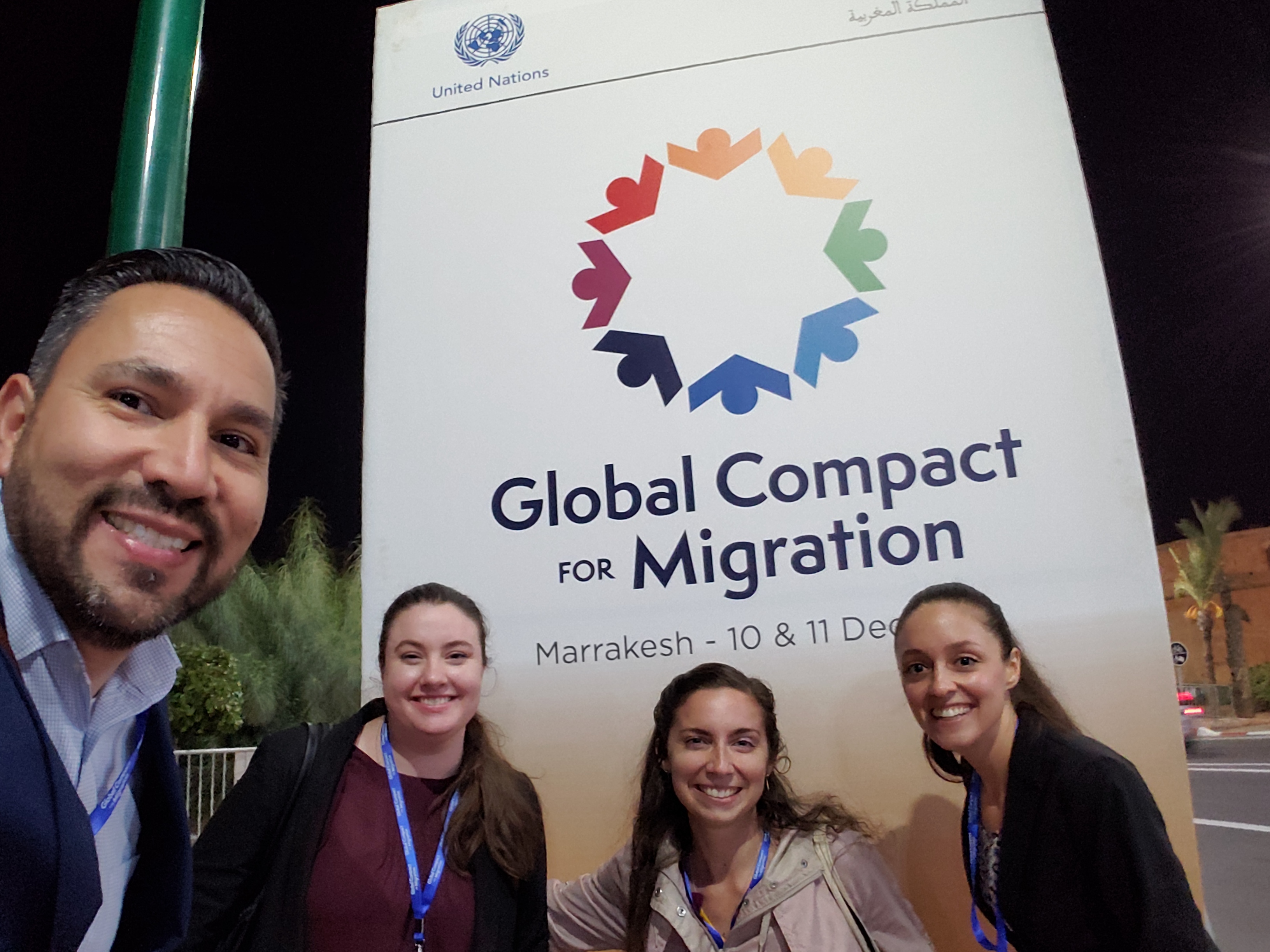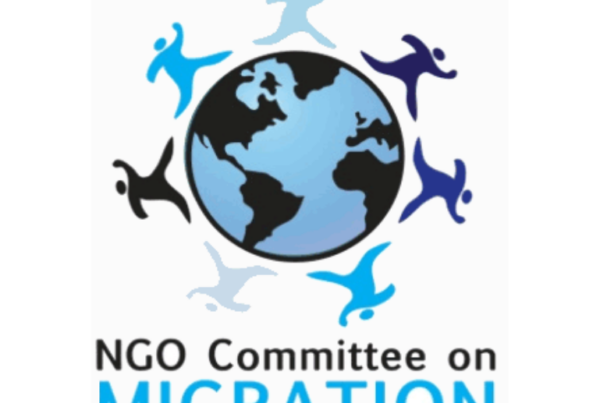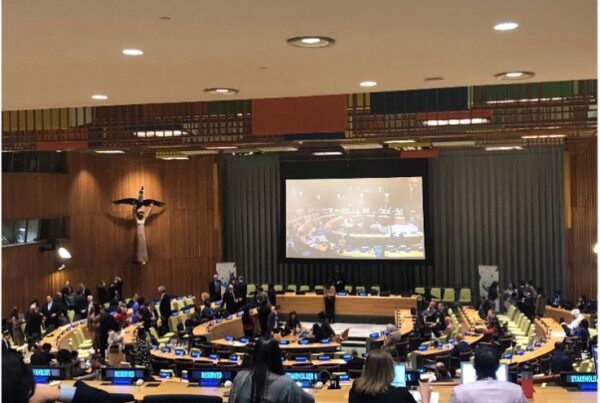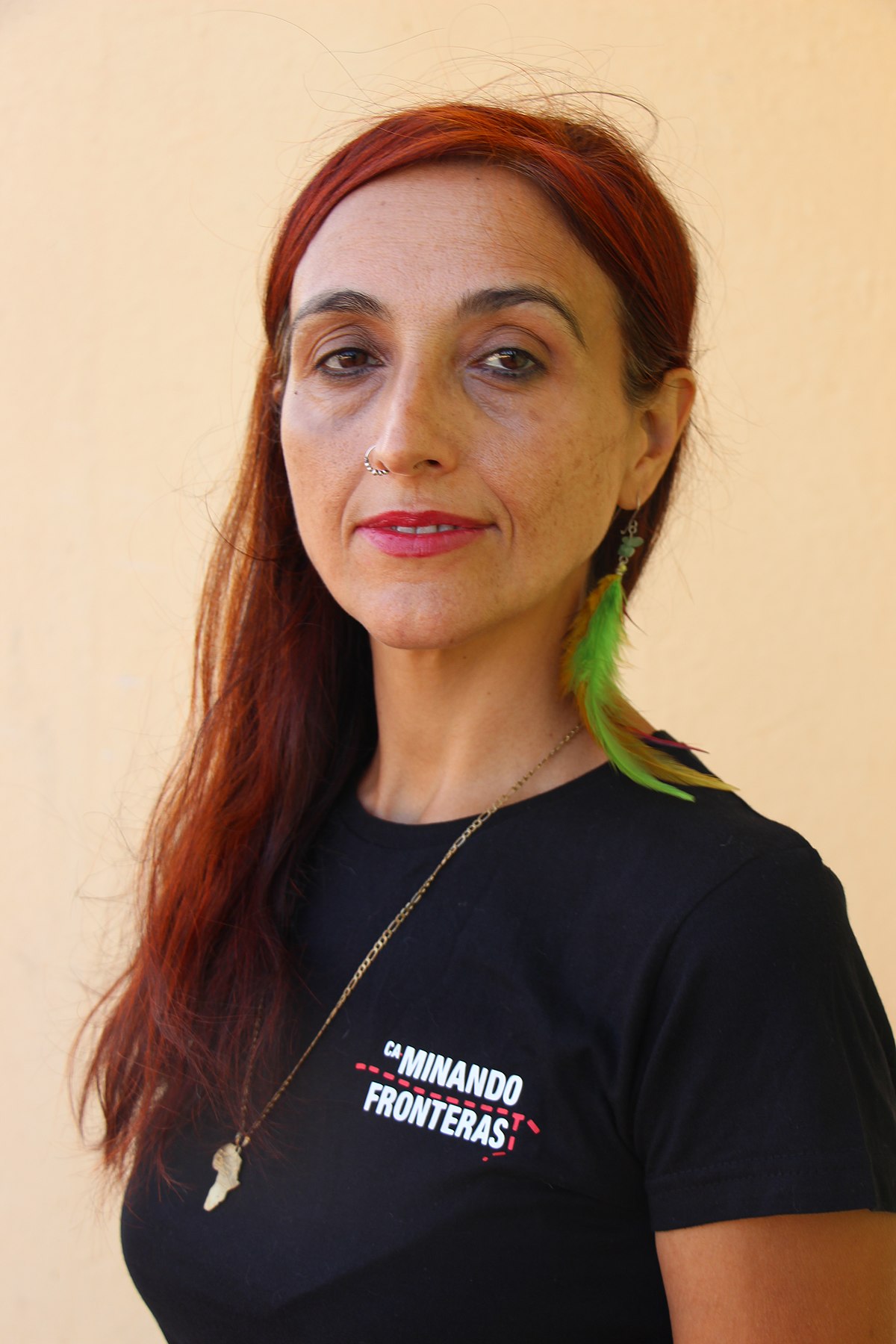By Teresa Blumenstein, former UI Executive Assistant and representative to the NGO Committee on Migration
You may recall from previous newsletters that, over the course of the last two years, your representatives at UNANIMA International have been following and contributing to the development process for the Global Compact for Safe, Orderly, and Regular Migration. (See the box below for a summary of this process.) As one of those representatives, I developed a deep passion for defending the human rights of migrants and a deep attachment to the UNANIMA family who shares that passion and lives it in a variety of ministries performed across the globe. Though I moved on to a new role with JCoR (the Justice Coalition of Religious, of which UI is a member) in June of 2018, I continue to serve on the leadership team of the NGO Committee on Migration. In December, I had the distinct privilege of finishing a journey I began with this family by representing UNANIMA in Marrakech, Morocco at the conference to adopt the new Global Compact for Migration.
The Path to the Compact: A Recap
2016: UI and our partners in the NGO Committee on Migration followed the negotiation and adoption of the New York Declaration, a political declaration asserting the rights of refugees and migrants, respectively, as well as the rights they have in common. It was a unanimously adopted acknowledgement that current modes of management of international migration were insufficient and, too often, creating avoidable situations of danger, chaos, and missed opportunities for the alleviation of poverty or the enrichment of societies. The New York Declaration also served as the “road map” for two processes: one to create a global agreement to improve international cooperation in protecting the rights of refugees (Global Compact on Refugees) and one to create a global agreement to improve international cooperation to (a) reduce the danger and disorder currently associated with many migration journeys and (b) promote the immigration management policies that respect human rights and maximize benefits to migrants’ communities of origin and destination (Global Compact for Migration).
2017: UI and our partners attended and submitted statements to a series of dialogues among governments on various aspects of migration concerns (root causes, labor migration and remittance fees, smuggling and trafficking, etc.). At the close of that year, UI participated on in a “stocktaking meeting” in Puerto Vallarta, Mexico whose purpose was to gather governments’ positions on various migration issues in the wake of the year of dialogues.
2018: UI and our partners closely followed and consulted with willing government representatives throughout 7 months of negotiations of the actual text of the Global Compact for Migration, advocating in particular for those displaced or under threat of displacement due to natural disasters, climate change, and other forms of human-made environmental degradation.
The vast majority of the world’s governments sent representatives to this adoption conference, including thirteen heads of state. The main objective of the conference was to offer an opportunity for States to give their final impressions of the text of the Global Compact for Migration (GCM) and to consolidate sufficient support to get it passed by a formal vote in the UN General Assembly later in the month. (See the box below for my overview and impressions of the text as a whole.)
Impressions of the GCM:
A Limited yet Forward-Facing Document for a Limited yet Forward-Facing World
The final text of the Global Compact for Migration is built upon a clear set of 23 objectives and political (but not legal) commitment to the pursuit of those objectives. The NGO Committee on Migration put together a short guide to these objectives, which is available online in English (https://bit.ly/2O5xY3X), Spanish (https://bit.ly/2Uujspm), and French (https://bit.ly/2G2GqRp).
A unique feature of this final text was the presentation beneath each objective of a “menu” of suggested policies and practices that would support the achievement of that objective. Essentially, these menus were collections of the most progressive, human rights-based policies that governments and civil society (non-government groups like UI) had presented throughout the two-year process of developing the GCM. Though stripped of some of the stronger and more specific demands for swift action, the voice of civil society was evident in these sections, particularly with regard to pursuing administrative alternatives to the detention of migrants; offering protections to migrants displaced by environmental factors; and providing certain types of services to foster the economic, political, and social inclusion of migrants in their destination communities. While the global, political climate would never have allowed governments to commit to a lengthy list of progressive practices such as these, including them as suggested policy options served as a clever compromise between the more migrant-welcoming countries and those whose ideals or circumstances lead them to favor stricter border policies or fewer supports and services for migrants. This structure allowed such practices to be internationally agreed upon as positive, useful steps toward safer and more orderly migration even though the world is not ready to unanimously agree to deliver on them in their own countries on a specified timeline.
In UN circles, this sort of exercise of naming ideals, agreeing on politically “correct” language to discuss an issue or population, or reaching agreement on the validity of certain policies as contributors to progress is an important rhetorical foundation for large-scale social and policy changes. In short, the GCM is not a tightly binding agreement that will swiftly deliver the world we desperately want. It may, however, be the best possible first step in that direction given the state of the world in which we live. In the same way a doctor might tell you the best physical exercise for maintaining good health is the exercise you will personally have the motivation to do regularly, the best text for a global agreement is the one to which most of the globe can actually agree at the time it is proposed. In my view, the GCM grew to be nearly the best possible version of a document with such lofty, moral, and just aspirations being voted on in an era of materially overprivileged and morally undereducated leadership.
Although the text of the Compact was finalized in July 2018, the adoption conference and General Assembly vote were held until December to allow government delegates several months to consult with their heads of state and other ministers back in their home capitals about whether to formally approve its adoption. Unfortunately, political leaders in several countries decided to distort the true objectives and level of commitment required to endorse the GCM. In order to exploit prevailing, populist, anti-immigrant sentiments for reelection purposes, such leaders mischaracterized the document as a dangerous, legally binding, treaty that would breach their national sovereignty by allowing other countries or the UN to interfere with their ability to control their own borders or enact national migration policies. Largely citing these falsehoods, politicians in five UN Member States ultimately opposed the adoption of the Compact (Czech Republic, Hungary, Israel, Poland, and the United States) and twelve others abstained from voting for or against it (Algeria, Australia, Austria, Bulgaria, Chile, Italy, Latvia, Libya, Liechtenstein, Romania, Singapore, and Switzerland).
In the wake of a long, laborious process such as the one the led to the Global Compact for Migration, which we view as long overdue and critical to saving lives and protecting the rights of the world’s 258 million migrants, we instinctively focus on those States that opposed or took a neutral position on the final document. While effecting real social and political change within these countries will certainly be an important part of our future work, we must not overlook the significant support the GCM received. Despite its character as a forward-facing, rights-based document developed in a moment in history in which global leadership is embattled with a widespread rash of fear-based nativism, 152 UN Member States ultimately voiced support for the Compact. At the conference for the GCM’s adoption in Morocco, the prevailing theme of remarks made by several heads of state and other high-level ministers was the critical importance of international cooperation in resolving the danger, disorder, and inhumanity of too many of today’s migration stories.
Also noteworthy was the unprecedented collaboration and coordination that emerged within the civil society advocates for migrants through the GCM development process. From 2016 to the present, a number of overlapping and sophisticated civil society networks took shape and harmonized their efforts across many migration sub-issue areas. The fruits of this global relationship-building effort were evident at the major meeting of civil society leaders in migration advocacy at the 11th Global Forum for Migration and Development (GFMD), which was held in Morocco in the week before the GCM adoption conference. At this meeting, I was able to make personal connections with phenomenal advocates and experts, especially those focused on the particular situation of persons forcibly displaced by or vulnerable to environmental factors. This issue took an unexpected place of prominence in the GCM negotiations and the final text of the GCM thanks to the persistent advocacy of disappearing small island countries and many civil society groups. Leaders of several of these environmental displacement-focused groups used the GFMD as an opportunity to begin weaving a new network of civil society advocates who are eager to coordinate their strategies for the advancement of global concern and action on this issue. Thanks to UNANIMA’s support for my presence at this conference, I was able to join this group and continue to communicate with them regularly.
Through UI’s role as a significant contributor to the work of the NGO Committee on Migration, we can and should be proud of the groundbreaking global network of partnerships that were developed on the road to the GCM and which promise to hold governments accountable for its implementation. We should also take pride in the ways our values were voiced and, in many instances, subtly woven into the final text of the GCM. As a worldwide family of advocates for the human rights of migrants and environmental stewardship, we have reached the end of the road to a global compact and are now setting out on 23 new paths to justice named in the objectives of the GCM. I am honored to have traveled this far with you and look forward to the many new ways we walk together on the journey ahead.






